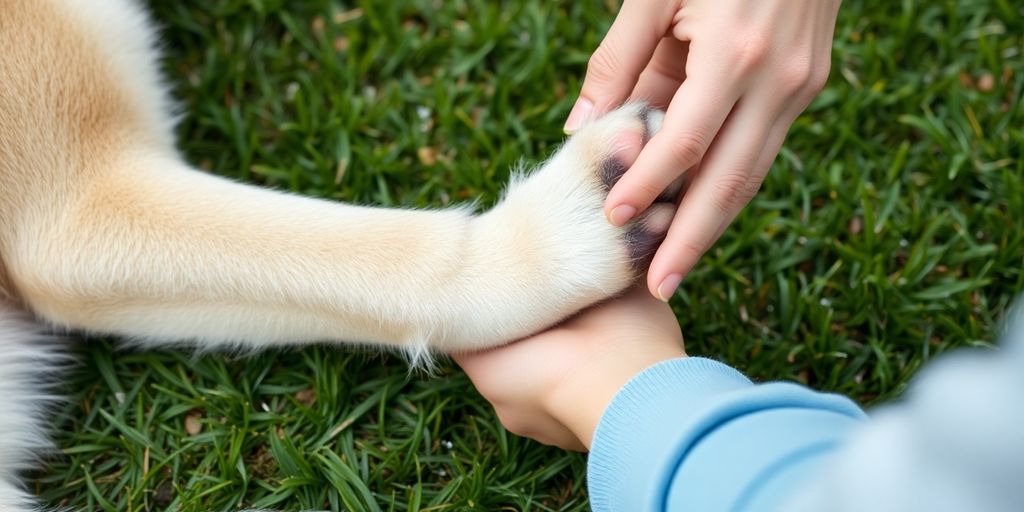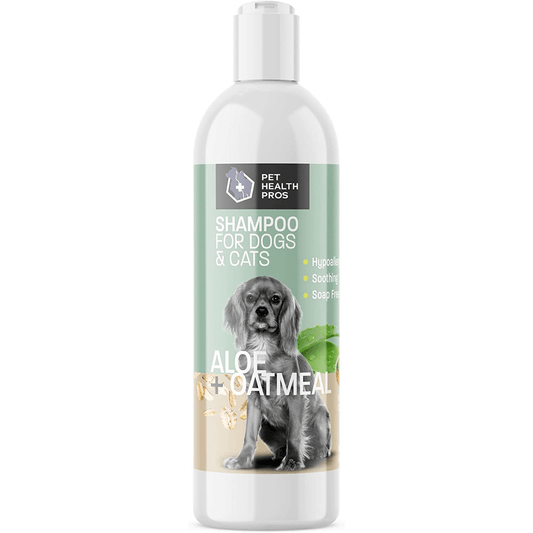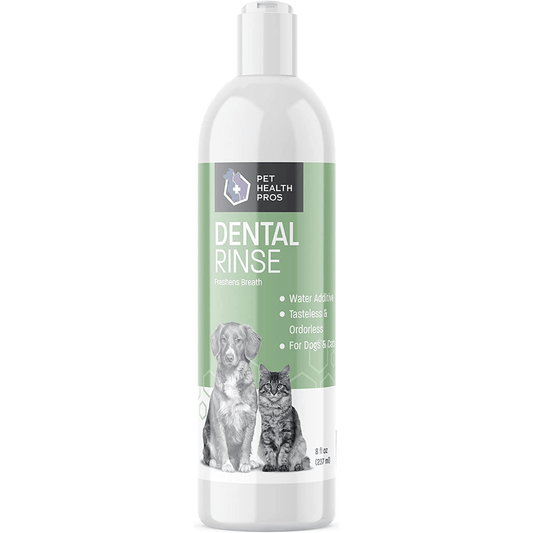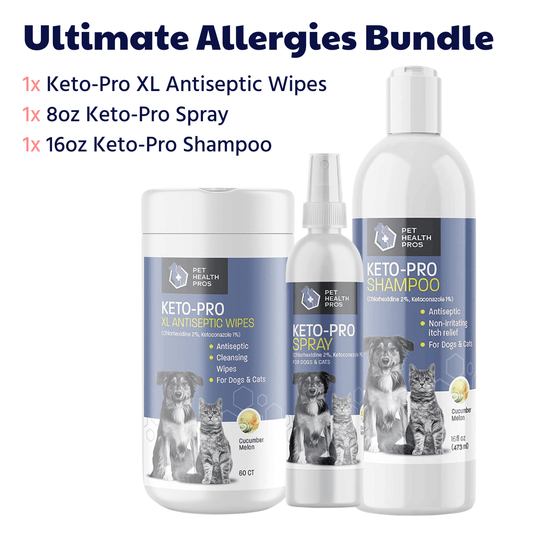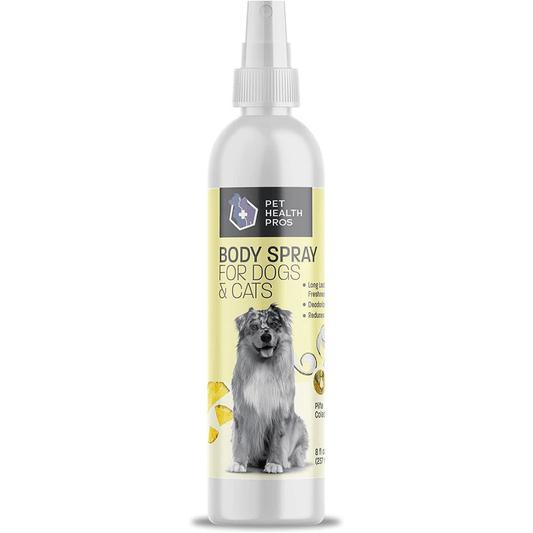If you've noticed your dog scratching at their paws more than usual or licking them obsessively, it might be a sign of a yeast infection. These infections can be uncomfortable and irritating for our furry friends. In this guide, we'll explore the causes, symptoms, and treatments for yeast infections in dog paws, along with prevention tips and when it's best to seek veterinary help.
Key Takeaways
- Yeast infections in dog paws can be caused by various factors, including allergies and moisture.
- Look for signs like redness, swelling, and excessive licking to identify a yeast infection.
- Treatment options include topical creams, oral medications, and some natural remedies.
- Preventing yeast infections involves maintaining hygiene and choosing the right diet for your dog.
- If symptoms worsen or don't improve, consult a veterinarian for proper diagnosis and treatment.
Understanding Yeast Infections In Dogs
It's pretty common for dogs to get yeast infections, and it's something most owners will deal with at some point. These infections aren't usually a sign of bad ownership, but understanding what causes them, how to spot them, and what makes some dogs more likely to get them can really help you keep your furry friend healthy and happy. Let's take a closer look.
What Causes Yeast Infections
Yeast infections in dogs are usually caused by an overgrowth of Malassezia pachydermatis, which is a type of yeast that normally lives on a dog's skin. It's when the balance of this yeast gets thrown off that problems start. Several things can cause this imbalance:
- Allergies: Food or environmental allergies can weaken the skin's defenses.
- Weakened Immune System: Conditions or medications that suppress the immune system can make a dog more prone to yeast overgrowth.
- Moisture: Yeast thrives in moist environments, so areas like skin folds, ears, and paws are particularly vulnerable.
- Antibiotics: While they fight bacteria, antibiotics can also kill off good bacteria that keep yeast in check.
Common Symptoms to Look For
Spotting a yeast infection early can make treatment easier. Here are some common signs to watch out for:
- Itching: Excessive scratching, licking, or biting at the affected area.
- Redness: Inflamed skin, often appearing bright pink or red.
- Odor: A musty or cheesy smell coming from the skin or ears.
- Hair Loss: Patches of missing fur in the affected area.
- Skin Changes: Greasy or scaly skin, sometimes with a dark, thickened appearance. If you notice any of these, it's a good idea to check with your vet.
Risk Factors for Yeast Infections
Some dogs are just more likely to get yeast infections than others. Knowing the risk factors can help you take extra precautions. Here's what to keep in mind:
- Breed: Certain breeds, like Basset Hounds, Cocker Spaniels, and Shih Tzus, have skin folds or ear structures that trap moisture, creating a perfect environment for yeast.
- Age: Puppies and older dogs may have weaker immune systems, making them more susceptible.
- Underlying Health Conditions: Dogs with diabetes, hypothyroidism, or other health issues are at higher risk.
- Environment: Dogs living in humid climates or spending a lot of time in water are more prone to yeast infections. Keeping an eye on these factors and taking preventive measures can go a long way in keeping your dog healthy. Regular vet check-ups are also important.
Identifying Yeast Infection Symptoms In Dog Paws
It's really important to catch a yeast infection in your dog's paws early. The sooner you spot it, the quicker you can start treatment and get your furry friend feeling better. Here's what to look for:
Signs of Discomfort
First off, keep an eye out for how your dog is acting. Are they paying more attention to their paws than usual? This could mean something's up. Here are some common signs:
- Excessive licking or chewing at the paws. This is a big one. If they can't stop licking, it's a red flag.
- Limping or favoring one paw over another. If walking seems painful, investigate.
- Rubbing their paws on furniture or the carpet. They might be trying to relieve itching or irritation.
If you notice any of these behaviors, take a closer look at their paws. It's always better to be safe than sorry.
Visual Indicators of Infection
Okay, now let's get visual. What do the paws actually look like? Yeast infections often cause some pretty obvious changes:
- Redness or inflammation, especially between the toes. This is a classic sign.
- Swelling of the paws. They might look puffy or larger than normal.
- Discharge or crusty buildup. Not pretty, but definitely a sign of infection.
- Changes in nail color or texture. The nails might become brittle or discolored.
Behavioral Changes in Affected Dogs
Sometimes, the signs are more subtle. Your dog might not be limping, but their behavior could still tell you something's wrong. Watch for:
- Increased irritability or restlessness. They might seem generally uncomfortable.
- Loss of appetite. Pain or discomfort can make them not want to eat.
- Reluctance to go for walks or play. If they suddenly seem less enthusiastic about their favorite activities, it could be due to paw discomfort.
- Whining or whimpering when their paws are touched. This is a clear sign of pain.
It's easy to miss these subtle cues, but paying attention to your dog's overall demeanor can help you catch a yeast infection early. If you see any of these signs, it's time to take action. Early detection is key!
Effective Yeast Infection Treatment Options
Dealing with a yeast infection on your dog's paws can be frustrating, but there are several treatment avenues you can explore. It's important to remember that what works for one dog might not work for another, and consulting with your vet is always a good idea before starting any new treatment.
Topical Treatments and Creams
Topical treatments are often the first line of defense against yeast infections on dog paws. These treatments work directly on the affected area to kill the yeast and reduce inflammation.
- Antifungal Creams: Look for creams containing ingredients like ketoconazole, miconazole, or clotrimazole. These are specifically designed to combat fungal infections.
- Medicated Wipes: These can be useful for cleaning the paws and applying medication at the same time. They're especially handy for dogs who don't like having creams applied.
- Antiseptic Solutions: Diluted povidone-iodine or chlorhexidine solutions can help to disinfect the area and prevent secondary bacterial infections.
Make sure to clean and dry the paws thoroughly before applying any topical treatment. It's also a good idea to prevent your dog from licking the treated area, which might mean using an Elizabethan collar.
Oral Medications
In more severe or persistent cases, your vet might prescribe oral antifungal medications. These medications work systemically to fight the yeast infection from the inside out. Oral medications are usually reserved for cases where topical treatments haven't been effective or when the infection is widespread.
- Fluconazole: A common antifungal medication that's effective against many types of yeast.
- Itraconazole: Another antifungal option, often used for more resistant infections.
- Ketoconazole: While also available as a topical treatment, it can be prescribed orally for systemic infections.
Oral medications can sometimes have side effects, so it's important to follow your vet's instructions carefully and monitor your dog for any adverse reactions.
Natural Remedies and Home Treatments
Some pet owners prefer to try natural remedies alongside or instead of conventional medications. While these might not be as potent as prescription treatments, they can provide relief and support the healing process. Always discuss these options with your vet first.
- Apple Cider Vinegar: Diluted apple cider vinegar can be used as a foot soak. Its acidity can help to kill yeast, but be careful if your dog has open sores, as it can sting.
- Coconut Oil: Coconut oil has antifungal properties and can be applied topically to moisturize and soothe the skin.
- Yogurt: Plain, unsweetened yogurt contains probiotics that can help to balance the skin's flora. You can apply it topically or add it to your dog's food.
It's important to remember that natural remedies might not be a substitute for veterinary care, especially in severe cases. If your dog's condition doesn't improve or worsens, seek professional help.
Preventing Yeast Infections In Dog Paws
Maintaining Proper Hygiene
Keeping your dog's paws clean and dry is a big deal. After walks, especially in damp areas, give those paws a good rinse with water and make sure to dry them thoroughly. Pay special attention to the areas between the toes, as this is where moisture loves to hang out. You can use a soft towel or even a cool setting on a hair dryer (but be careful not to burn your dog!).
- Regular paw cleaning
- Thorough drying
- Avoidance of overly wet environments
Choosing the Right Dog Food
What your dog eats can really impact their overall health, including their susceptibility to yeast infections. Opt for high-quality dog food that's free from excessive fillers, grains, and sugars, as these can sometimes contribute to yeast overgrowth. Some dogs might even have sensitivities or allergies to certain ingredients, which can weaken their immune system and make them more prone to infections. Consider talking to your vet about whether a special diet, like a limited-ingredient or grain-free formula, might be beneficial for your furry friend. A balanced diet supports a healthy immune system, which is your dog's best defense against yeast and other infections. Look for food with prebiotics and probiotics to promote gut health, which is linked to overall immunity. You can also consider adding supplements to their diet to help with their immune system.
Regular Vet Check-ups
Regular vet visits are super important for keeping your dog healthy. Your vet can spot potential problems early on, sometimes even before you notice any symptoms. They can also give you personalized advice on how to care for your dog based on their breed, age, and lifestyle. Plus, regular check-ups allow your vet to monitor your dog's overall health and make sure they're getting the right vaccinations and parasite prevention. Don't skip those appointments! Early detection and prevention are key to avoiding a lot of health issues, including yeast infections. If you notice any changes in your dog's behavior or physical condition, don't hesitate to schedule a visit. Your vet is your best resource for keeping your dog happy and healthy. Make sure you get your dog checked regularly.
Keeping up with regular vet visits is a great way to ensure your dog is healthy and happy. They can catch things early and give you the best advice for your dog's specific needs.
When To Consult A Veterinarian
It's easy to try and handle minor health issues yourself, but sometimes, you really need a vet's opinion. When it comes to yeast infections in your dog's paws, knowing when to seek professional help can make all the difference in their comfort and recovery. Don't hesitate to reach out if you're unsure – it's always better to be safe than sorry.
Recognizing Severe Symptoms
Some symptoms are a clear sign that it's time to call the vet. If you notice any of these, don't wait:
- Excessive swelling or inflammation that doesn't improve with basic care.
- Open sores, bleeding, or pus.
- Severe pain causing your dog to limp or avoid putting weight on the paw.
- Systemic symptoms like fever, lethargy, or loss of appetite.
These could indicate a more serious infection or underlying issue that needs immediate attention. It's important to monitor your dog's condition closely and act quickly if things seem to be getting worse. If you notice any of these symptoms, it's time to seek professional diagnosis.
Understanding Treatment Limitations
Sometimes, home remedies and over-the-counter treatments just aren't enough. If you've been diligently treating the yeast infection for a week or two and see no improvement, it's time to consult a vet. Persistent infections can become resistant to certain treatments, and a vet can prescribe stronger medications or explore other potential causes. Don't keep trying the same thing if it's not working – it could be prolonging your dog's discomfort and allowing the infection to worsen.
Importance of Professional Diagnosis
It's easy to assume that any paw issue is a yeast infection, but that might not always be the case. Other conditions, like allergies, bacterial infections, or even foreign objects lodged in the paw, can mimic yeast infection symptoms. A vet can perform tests to accurately diagnose the problem and rule out other possibilities.
Getting a correct diagnosis is key to effective treatment. A vet can take skin scrapings or perform other tests to identify the specific type of infection and recommend the most appropriate course of action. This ensures that your dog receives the right treatment and avoids unnecessary medications or delays in care.
Post-Treatment Care For Dog Paws
So, your dog's paws are finally on the mend after that nasty yeast infection. That's awesome! But the job isn't quite done yet. Proper post-treatment care is super important to make sure the infection doesn't come back and that your furry friend stays comfortable. Think of it like this: you wouldn't just stop taking antibiotics the second you feel better, right? Same deal here. Let's talk about what you need to do.
Monitoring Recovery Progress
Keep a close eye on those paws! You're looking for continued improvement, not just a standstill. Check daily for any signs of relapse, like increased redness, swelling, or itching. It's also a good idea to take pictures every few days to visually track the healing. If things seem to be getting worse again, don't wait—call your vet. Here's a simple checklist:
- Daily visual inspection
- Note any changes in behavior (licking, chewing)
- Compare paw appearance to previous days
Maintaining Cleanliness
Keeping your dog's paws clean is a big deal during recovery. Gently wash the affected paws with a mild, antifungal shampoo as directed by your vet. Make sure to dry them thoroughly afterward, because moisture is yeast's best friend. Avoid harsh soaps or excessive scrubbing, which can irritate the skin. Consider using paw wipes after walks to remove dirt and allergens.
Follow-Up Vet Visits
Don't skip those follow-up appointments! Your vet needs to confirm that the infection is completely gone and to adjust the treatment plan if needed. These visits are also a good time to discuss any long-term management strategies to prevent future infections. Think of it as a pit stop to make sure everything is running smoothly. Your vet might want to do another skin scrape or culture to be absolutely sure the yeast is gone. It's better to be safe than sorry, especially when it comes to your dog's health. If you notice any signs of discomfort after the treatment, contact your vet immediately.
Post-treatment care is not just about addressing the immediate aftermath of the infection; it's about establishing a routine that supports your dog's long-term paw health. This includes consistent monitoring, gentle cleaning practices, and adherence to veterinary recommendations to minimize the risk of recurrence and maintain your dog's comfort and well-being.
Long-Term Management Strategies
So, you've tackled the yeast infection in your dog's paws. Great! But the battle isn't over. Long-term management is key to preventing those pesky infections from returning. It's all about creating an environment that doesn't favor yeast growth. Think of it like this: you've evicted the unwanted guests, now you need to change the locks and make sure they can't get back in!
Dietary Adjustments
What your dog eats plays a huge role in their overall health, including their susceptibility to yeast infections. A diet high in sugars and carbohydrates can actually feed yeast, making them thrive. Consider these points:
- Talk to your vet about switching to a limited-ingredient diet. These diets often have fewer potential allergens and can help identify any food sensitivities that might be contributing to yeast overgrowth.
- Look for dog foods that are grain-free or have a lower carbohydrate content. Sweet potatoes, corn, and rice can sometimes exacerbate yeast issues.
- Consider adding a probiotic supplement to your dog's diet. Probiotics can help balance the gut flora, making it harder for yeast to take over. You can find probiotic supplements specifically formulated for dogs.
It's not just about what you take out of their diet, but also what you add in. Omega-3 fatty acids, for example, can help reduce inflammation and support skin health, making it less hospitable to yeast.
Regular Grooming Practices
Grooming isn't just about keeping your dog looking good; it's also about maintaining their skin health. Regular grooming can help prevent yeast infections by keeping the paws clean and dry. Here's what to do:
- After your dog has been outside, especially if it's wet or muddy, make sure to thoroughly dry their paws. Yeast loves moisture!
- Keep the hair around your dog's paws trimmed short. This allows for better air circulation and reduces the chance of moisture getting trapped.
- Regularly clean your dog's paws with a mild, vet-approved antiseptic wipe. This can help remove any yeast or bacteria that might be starting to grow.
Environmental Control Measures
The environment your dog lives in can also contribute to yeast infections. Think about it – if their bedding is constantly damp or they're always walking through wet grass, their paws are going to be more prone to problems. Consider these steps:
- Wash your dog's bedding regularly, at least once a week, in hot water and dry it thoroughly. This helps kill any yeast or bacteria that might be lurking there.
- Avoid letting your dog walk through areas with standing water or excessive moisture. If you can't avoid it, make sure to dry their paws thoroughly afterward.
- Keep your home well-ventilated. Humidity can encourage yeast growth, so good air circulation is important.
By implementing these long-term management strategies, you can significantly reduce the risk of recurring yeast infections in your dog's paws and keep them happy and comfortable.
Managing your health over the long haul is really important. It’s not just about feeling good today, but also about staying healthy for years to come. You can start by making small changes in your daily routine, like eating better and staying active. If you want to learn more about effective long-term strategies, visit our website for helpful tips and resources!
Wrapping It Up
In conclusion, dealing with yeast infections in your dog's paws can be a real challenge, but it’s manageable with the right approach. Keeping your dog's paws clean and dry is key, and using the right treatments can make a big difference. Regular vet check-ups are important too, as they can help catch any issues early. If you notice any signs of infection, don’t hesitate to act. With a little care and attention, you can help your furry friend get back to their happy, playful self.
Frequently Asked Questions
What are the signs that my dog might have a yeast infection on their paws?
Look for symptoms like licking their paws, redness, swelling, or a bad smell. Your dog may also seem uncomfortable or in pain.
How can I treat my dog's yeast infection at home?
You can try using antifungal creams or sprays that you can buy at pet stores. Some people also use natural remedies like apple cider vinegar, but always check with a vet first.
What causes yeast infections in dog paws?
Yeast infections can happen due to allergies, wet conditions, or a weak immune system. Sometimes, a dog's diet can also play a role.
How can I prevent yeast infections in my dog's paws?
Keep your dog's paws clean and dry, choose good quality dog food, and take them to the vet regularly for check-ups.
When should I take my dog to the vet for a yeast infection?
If your dog has severe symptoms, such as excessive swelling or bleeding, or if home treatments do not work, it's time to see a vet.
What should I do after my dog finishes treatment for a yeast infection?
Keep an eye on your dog's paws for any signs of returning infection, maintain cleanliness, and schedule follow-up visits with the vet.

